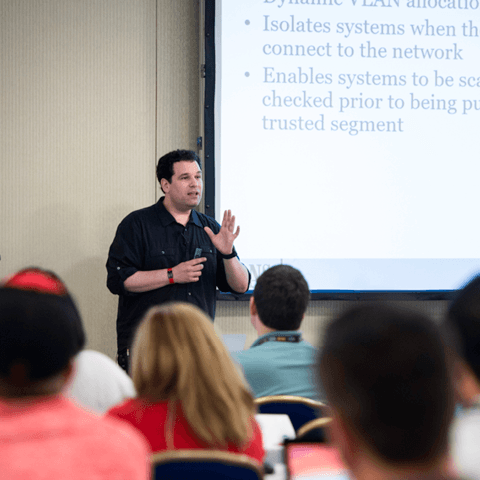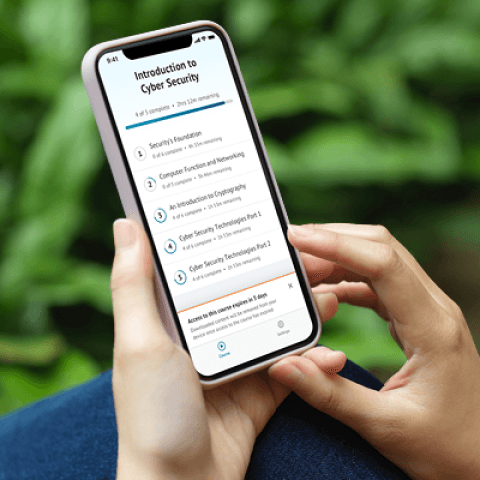SEC595: Applied Data Science and AI/Machine Learning for Cybersecurity Professionals


Experience SANS training through course previews.
Learn MoreLet us help.
Contact usBecome a member for instant access to our free resources.
Sign UpWe're here to help.
Contact Us
Apply your credits to renew your certifications
Attend a live, instructor-led class at a location near you or remotely, or train on your time over 4 months
Course material is geared for cyber security professionals with hands-on experience
Apply what you learn with hands-on exercises and labs
Learn to evaluate, assess, and exploit vulnerabilities across Wi-Fi, Bluetooth, RFID, and emerging wireless technologies, empowering practitioners to defend against sophisticated wireless attacks.
SEC617 will not only give you a basic understanding of wireless threats and vulnerabilities, but it can be as advanced as you want to make it with the questions that you ask.
Modern organizations often underestimate wireless security, leaving critical infrastructure vulnerable to sophisticated attacks. SEC617 addresses this critical gap by providing security professionals with comprehensive skills to identify, evaluate, and defend against wireless technology threats. From Wi-Fi networks to Bluetooth devices, RFID systems, and software-defined radio, this WiFi hacking course delivers hands-on training that expands your wireless security expertise across multiple technologies and protocols.


James Leyte-Vidal, GSE #209, has shaped offensive cybersecurity through decades of frontline innovation, authoring Ethical Password Cracking and leading Fortune 100 InfoSec teams to elevate global cyber defense.
Read more about James Leyte-Vidal

Larry has revolutionized embedded device security with decades of hands-on offensive research, co-authoring SANS's flagship wireless and IoT penetration testing courses, and pioneering SBOM exploitation techniques for supply chain defense strategies.
Read more about Larry PesceExplore the course syllabus below to view the full range of topics covered in SEC617: Wireless Penetration Testing and Ethical Hacking.
Explore wireless threat landscapes and fundamental analysis techniques. Learn to identify rogue devices, understand protocol weaknesses, and develop remote penetration testing skills using compromised Windows and macOS systems.
Develop advanced skills to exploit Wi-Fi vulnerabilities across consumer and enterprise networks. Focus on protocol-level deficiencies and practical attack methodologies.
Dive deep into WPA2 and WPA3 network assessments, exploring authentication and security modes. Investigate nearest neighbor attacks and operation within constrained environments.
Examine Bluetooth technologies across classic, enhanced data rate, and low energy protocols. Learn Software Defined Radio techniques for identifying and assessing proprietary wireless systems.
Evaluate RFID technologies, privacy risks, and security vulnerabilities in contactless systems. Develop skills to analyze and exploit smart card and NFC technologies.
On the last day of class we will pull together all the concepts and technology we have covered during the week in a comprehensive Capture the Flag event. In this hands-on exercise, you will have the option to participate in multiple roles:, attacking recorded Wi-Fi networks, decoding proprietary wireless signals, exploiting smart card deficiencies, and more.
Responsible for assessing systems and networks to identify deviations from acceptable configurations, enclave policy, or local policy. Measure effectiveness of defense-in-depth architecture against known vulnerabilities.
Explore learning pathApplication penetration testers probe the security integrity of a company’s applications and defenses by evaluating the attack surface of all in-scope vulnerable web-based services, clientside applications, servers-side processes, and more. Mimicking a malicious attacker, app pen testers work to bypass security barriers in order to gain access to sensitive information or enter a company’s internal systems through techniques such as pivoting or lateral movement.
Explore learning pathResponsible for planning, preparing, and executing system tests; evaluating test results against specifications and requirements; and reporting test results and findings.
Explore learning pathAdd a GIAC certification attempt and receive free two practice tests. View pricing in the info icons below.
When purchasing a live instructor-led class, add an additional 4 months of online access after your course. View pricing in the info icons below.
The detailed cryptographic explanations in SEC617 made it easier to understand how various encryption algorithms work-which for me is a first!
SEC617 is great for someone looking for a top-to-bottom rundown of wireless attacks.
If you're thinking about wireless, take SEC617. If you're not, take SEC617.

Get feedback from the world’s best cybersecurity experts and instructors

Choose how you want to learn - online, on demand, or at our live in-person training events

Get access to our range of industry-leading courses and resources